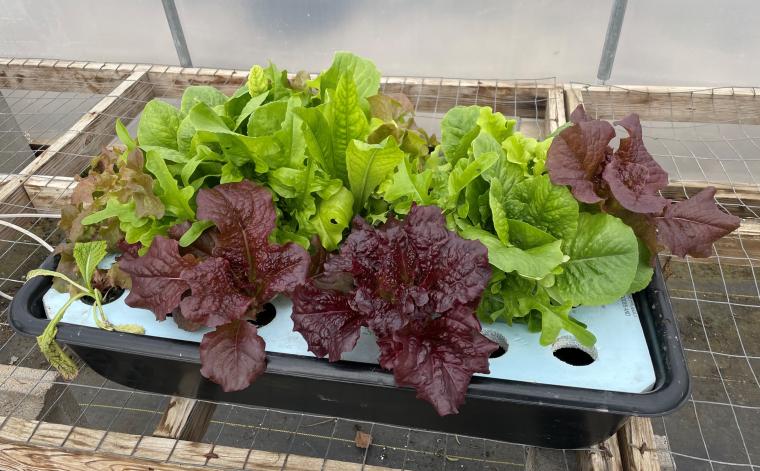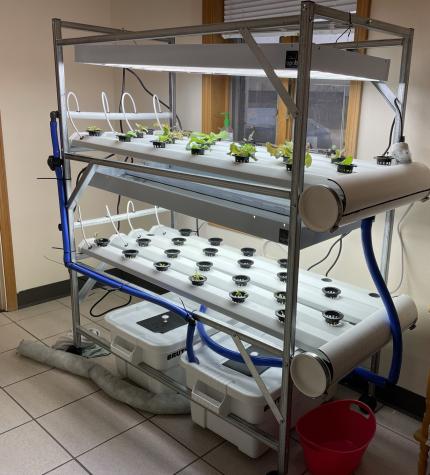Writer
Linda GeistCOLUMBIA, Mo. – In the near future, you might not need to go to the garden or the grocery store to get your favorite salad fixings. Instead, you might be able to pluck them from your desktop or kitchen countertop.
Horticulture educators from University of Missouri Extension and Lincoln University Cooperative Extension soon will teach classes in hydroponics, a system for growing plants without the usual constraints of the outdoors – temperature, water, sunlight soil or location.
MU Extension horticulturist Donna Aufdenberg and 16 other educators from MU Extension and Lincoln University participated in “teach the teachers” training, thanks to a Specialty Crop Block Grant through the Missouri Department of Agriculture.
In November, Aufdenberg will be teaching two hydroponics workshops next month: Nov. 6 in Perryville and Nov. 13 in Jackson. Other dates and locations are to follow.
Each educator received a hydroponic unit for growing salad greens. Most units fit on a desktop and use the nutrient flow technique, in which plants grow in a nutrient solution that circulates around the root system. Units require electricity and plants need some type of lighting, preferably LED lighting.
Another option for greens is a deep water culture system. Plants sit in net cups suspended from holes in a Styrofoam mat. The roots hang from the net cup in a solution of water and nutrients.
The third choice was a Dutch bucket system, which is a square bucket containing perlite or expanded clay pebbles. It is suitable for growing tomatoes or cucumbers.
Aufdenberg says hydroponic systems in county extension centers have piqued a lot of curiosity and conversation. Greens and herbs grow quickly – about 30 days from seed to salad. Tomatoes and cucumbers take longer.
Benefits are many – convenience, sustainability, and no supply chain issues or constraints associated with traditional gardening, Aufdenberg says.
The system does have a learning curve, however, she says. Desktop gardeners must learn about chemistry so they can monitor the pH of the growing medium to maintain its stability.
While large commercial systems can require investments of up to $100,000 or more, desktop systems can cost around $100.
“When all parameters are right, it is easy and quick to grow a crop,” Aufdenberg says.
For a list of scheduled MU Extension hydroponic workshops, visit http://muext.us/HPWS. To ask about future workshops near you, contact your local MU Extension center.
Photos
https://extension.missouri.edu/media/wysiwyg/Extensiondata/NewsAdmin/Photos/2023/20231011-hydro-1.jpg
MU Extension and Lincoln University educators will soon begin teaching classes in hydroponics, a farming system that allows greens to be grown on a desktop or kitchen countertop. Photo courtesy of Donna Aufdenberg.
https://extension.missouri.edu/media/wysiwyg/Extensiondata/NewsAdmin/Photos/2023/20231011-hydro-2.jpg
Hydroponic units come in various sizes and prices. This unit uses the nutrient flow technique, which allows plants to grow in a nutrient solution that circulates around the root system. Photo courtesy of Donna Aufdenberg.
https://extension.missouri.edu/media/wysiwyg/Extensiondata/NewsAdmin/Photos/2023/20231011-hydro-3.jpg
MU Extension horticulturist Katie Kammler is one of 17 MU and Lincoln University educators who will soon begin teaching classes on hydroponics. Kammler says visitors to her Ste. Genevieve office showed great interest in how to use hydroponics to grow greens year-round. Photo courtesy of Katie Kammler.


